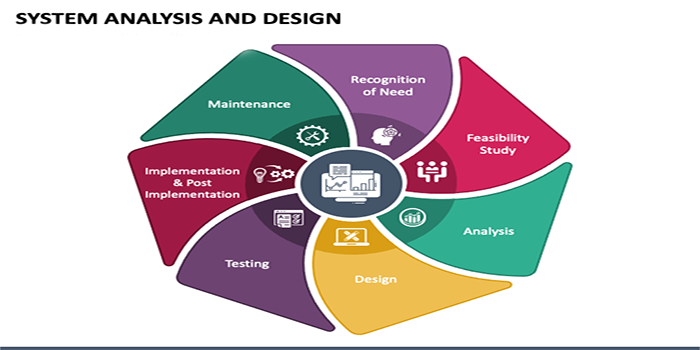
Systems Analysis and Design Systems Analysis and Design is a process of gathering and defining user requirements, and then designing, constructing, and testing a system to meet those requirements. It is a process that involves conceptualizing, analyzing, refining, and documenting a system‘s hardware, software, and organizational structures. It is also referred to as systems analysis and design.
Systems Analysis and Design Training Course
The Systems Analysis and Design training course is designed to provide participants with an in–depth understanding of the system development life cycle and the techniques and tools used for systems analysis and design. It covers the entire life cycle of systems development, from requirements gathering and analysis to system design, implementation, testing and maintenance. Participants will learn how to use techniques such as data flow diagrams, entity relationship diagrams and user stories to develop, document and analyse systems. In addition, they will learn how to use a range of tools, such as Microsoft Visio and Rational Rose, to create models and diagrams. They will also learn how to use Agile and Waterfall methodologies to plan and manage the development of systems. By the end of the course, participants will have a good understanding of the systems analysis and design process and will be able to apply the skills they have learnt to the development of successful information systems.
Best University of Systems Analysis and Design in India
1. Birla Institute of Technology and Science, Pilani
2. Indian Institute of Technology, Delhi
3. Indian Institute of Information Technology, Allahabad
4. Amrita Vishwa Vidyapeetham, Coimbatore
5. Vellore Institute of Technology, Vellore
6. Manipal Institute of Technology, Manipal
7. SRM Institute of Science and Technology, Chennai
8. Thapar Institute of Engineering and Technology, Patiala
9. BITS Pilani Goa Campus
10. Institute of Management Technology, Ghaziabad
What is study of Systems Analysis and Design
Systems Analysis and Design is a process used by organizations to understand how to optimize their business processes and operations through technology. It is a systematic approach to understanding the current state of an organization’s information system, and then designing, developing and deploying solutions to meet the organization’s needs. The process includes identifying and understanding the stakeholders, analyzing the current system, and proposing solutions to improve the system. Solutions may include changes to the hardware, software and processes used by the organization.
Benefits of system analysis and design
1. Improved Efficiency: System analysis and design can help organizations to identify areas where processes and procedures can be improved and streamlined. By automating manual processes and introducing efficient systems, organizations can improve their overall efficiency.
2. More Accurate Data: System analysis and design can help organizations to ensure that their data is accurate and up to date. This can help reduce errors and improve decision making.
3. Increased Productivity: System analysis and design can help organizations to increase their productivity by streamlining processes and eliminating redundant tasks.
4. Improved User Experience: System analysis and design can help organizations to understand their users better and create systems that meet their needs. This can lead to improved user satisfaction and loyalty.
5. Reduced Costs: System analysis and design can help organizations to reduce costs by eliminating unnecessary and outdated processes.
6. Improved Competitiveness: System analysis and design can help organizations to remain competitive by creating systems that are tailored to their particular needs.
Best tools and techniques of system analysis and design
1. Requirements Gathering: This is the first and most important step in the system analysis and design process. Requirements gathering involves collecting information from stakeholders, users, and other sources to determine the scope of the project. This step is necessary to ensure the system meets the needs of the stakeholders and users.
2. Process Modeling: This involves using diagramming techniques, such as flowcharts and data flow diagrams, to create a visual representation of the system’s components and processes. Process modeling helps to identify potential problems and inefficiencies in the system.
3. Prototyping: Prototyping is a technique used to create a working model of a system before it is fully developed. Prototypes are used to test and refine the system’s design and functionality.
4. Structured Design: Structured design is a technique used to organize and structure the system’s components and processes. It is used to create a logical structure that can be used to guide the development of the system.
5. System Testing: System testing is an important step in the system analysis and design process. System testing involves testing the system to make sure it meets the requirements of the stakeholders and users.
6. Documentation: Documentation is a key part of the system analysis and design process. Documentation includes things like user manuals, technical specifications, and data dictionaries. Documentation is essential to ensure the system is properly maintained and understood.






